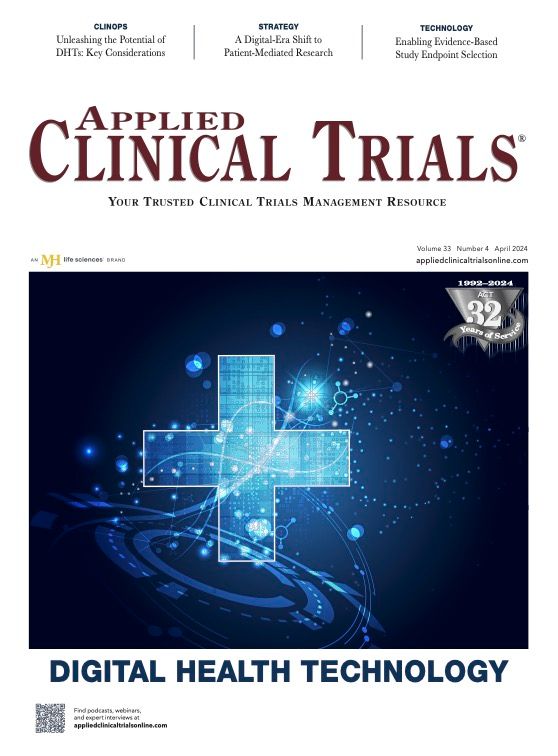Unstructured Patient Diaries: To be, or not to be, that is the Question
Whether unstructured patient diaries will be part of future clinical trials depends on three main factors, including answers around added value.

Generating insights from data based on structured patients’ reports dates back to 1980.1-3 At this time, researchers began to develop tools to standardize the collection of patient experience data (PED), in the form of patient-reported outcome measures (PROMs). This standardization has enabled the easy collection, scoring, and interpretation of PED across many disease indications. Certain constructs, such as pain, fatigue, and nausea, are known only to the patient, and in some disease indications, PROMs are used to support primary study endpoints.4 PRO data can also provide useful insights into quality of life.
PROMs are highly structured instruments, addressing specific scientific questions, and are validated according to widely accepted methodologies. Structured content is required to ensure that patient perceptions are captured accurately and consistently, thereby resulting in interpretable data. As an industry, we have typically avoided collecting and analyzing unstructured data due to challenges coding, interpreting, and generalizing this kind of data, which are exacerbated in the context of multilingual studies. However, there is a growing number of examples of the successful synthesis of unstructured narrative data in clinical research5 and these may be further accelerated by the increasing capabilities of generative artificial intelligence (AI), such as GPT-4,6 to make sense of and draw insights from unstructured data.
Unlike structured PROM data, patient narratives are typically unsolicited. This may provide unique insights into aspects of health most meaningful to patients beyond the fixed focus of specific PROMs. In one 2022 publication, an unstructured symptom and experience diary maintained by a patient during anticancer treatment provided valuable contextual insights to explain other, objective data collected by the patient using a wearable device.7 In particular, the recording of intercurrent illnesses, impactful symptoms, and changes in the typical daily routine (e.g., entertaining visitors) explained changes in the time-series of the objective wearable device data. It is interesting to investigate further the potential that unstructured patient diary data might afford in generating patient insights to inform drug development.
One application area could be during early- phase drug development, where less is understood about the impact of treatment and aspects of health most meaningful to patients. For example, Project Optimus,8 and the recent FDA draft guidance on dose selection in oncology trials,9 require better characterization of a treatment’s dose-response relationship for optimal dose selection in early- phase cancer trials. With newer treatments, where the adverse effect profile of a drug is less well known, unstructured diaries may provide a tool to collect tolerability data representing aspects most important to individual patients to understand an emerging safety profile, guide dose selection, and optimize treatment regimen.10
Further, in rare disease studies where disease- related symptoms may be very heterogenous, an unstructured diary may provide a vehicle to collect valuable insights that could be difficult or inefficient to collect using a traditional PROM.
Additionally, as part of a multi-domain assessment combining wearable and PRO data,11 unstructured reports enable clinical trial patients to select the content meaningful to them as it relates to their medical condition and comorbidities. This may drive deeper insights, and provide contextual labeling to aid interpretation of continuous wearable data.
These uses in early drug development may provide additional concept elicitation evidence to enable optimal PROM selection or development for use in later phase studies.
While a diary consisting of large amounts of unstructured text can be challenging to navigate through, extract data, and interpret, the use in smaller samples and the potential of emerging AI approaches can aid synthesis into novel insights and outcome measures.11
The question whether unstructured patient diaries will be a part of future clinical trials depends on the perceived added value, efforts to drive robust methodology, and technologies to operationalize implementation, synthesis, and insight-generation.
Authored on behalf of Critical Path Institute’s eCOA Consortium by Elena Izmailova, Chief Science Officer, Koneksa Health; Bill Byrom, VP, Product Intelligence and Positioning, Signant Health; and Jan Malecki, Associate Director, eCOA, WCG Clinical Endpoint Solutions.
References
1. Bombardier, C.; et al., Auranofin Therapy and Quality of Life in Patients with Rheumatoid Arthritis. Results of a Multicenter Trial. Am J Med. 1986. 81 (4), 565-78.
2. Tarlov, A.R.; et al., The Medical Outcomes Study. An Application of Methods for Monitoring the Results of Medical Care. JAMA. 1989. 262 (7), 925-30.
3. Croog, S.H.; et al., The Effects of Antihypertensive Therapy on the Quality of Life. N Engl J Med. 1986. 314 (26), 1657-64.
4. Byrom, B.; Muehlhausen, W. Electronic Patient Reported Outcome Measures. An Implementation Handbook for Clinical Research. 2nd edition ed. 2023.
5. Byrom, B.; et al. Deriving Meaningful Aspects of Health Related to Physical Activity in Chronic Disease: Concept Elicitation Using Machine Learning-Assisted Coding of Online Patient Conversations. Value Health. 2023. 26 (7), 1057-1066.
6. Lee, P.; Goldberg, C.; Kohane, I. The AI Revolution in Medicine: GPT-4 and Beyond. 2023. Pearson.
7. Izmailova, E.S.; Ellis, R.D. When Work Hits Home: The Cancer-Treatment Journey of a Clinical Scientist Driving Digital Medicine. JCO Clin Cancer Inform. 2022. 6, e2200033.
8. FDA, Project Optimus. Reforming the Dose Optimization and Dose Selection Paradigm in Oncology (January 5, 2024). https://www.fda.gov/about-fda/oncology-center-excellence/project-optimus.
9. FDA, Optimizing the Dosage of Human Prescription Drugs and Biological Products for the Treatment of Oncologic Diseases. Draft Guidance for Industry (January 2023). https://www.fda.gov/regulatory-information/search-fda-guidance-documents/optimizing-dosage-human-prescription-drugs-and-biological-products-treatment-oncologic-diseases.
10. Izmailova, E.S.; Wood, W.A. Biometric Monitoring Technologies in Cancer: The Past, Present, and Future. JCO Clin Cancer Inform. 2021. 5, 728-733.
11. Izmailova, E.S.; et al., A Proposed Multi-Domain, Digital Model for Capturing Functional Status and Health-Related Quality of Life in Oncology. Clin Transl Sci. 2024. 17( 1), e13712.
